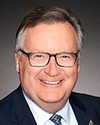Thank you for the question.
Maybe I could focus on what we're doing in the off-diesel space. Under our clean energy for rural and remote communities, there's a $220-million program over five years that has been created to really address our Paris climate change targets. Embedded in that program is a capacity stream. We understood that, if we're going to embark upon a set of initiatives to reduce diesel use in communities, it's going to take some time. We'd be establishing relationships with communities, and we needed a capacity stream that looked at that front-end piece of moving communities into clean, renewable projects.
In the area of biomass, which I'm more familiar with, we've often talked about how there could be a 10- or 12-step program to move to biomass for heat or power generation. That's because you're talking about the front end, understanding how to do forestry management; training people in forestry operations; looking at the types of systems you can use and whether or not you're just going to use them for heat or power, combined heat and power; and then looking at host capital installation, the capacity of the people to be able to run those facilities over time. In terms of that whole gamut of activities, from the front end to the back end, we have to have capacity right through.
In addition, we've just announced the challenge-based program, where we're working with the Indigenous Clean Energy Network to build on their 20/20 catalysts program to build a series of clean energy community champions in a number of different first nations, primarily, but also in Métis communities across Canada, so that they can go back to their communities, develop clean energy plans and come back to us with funding proposals to be able to proceed forward.



